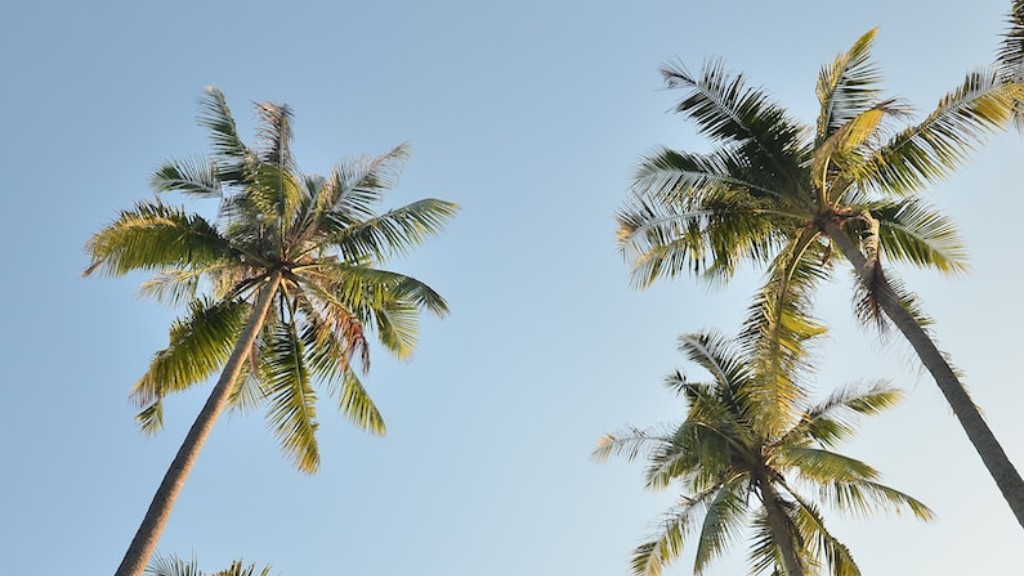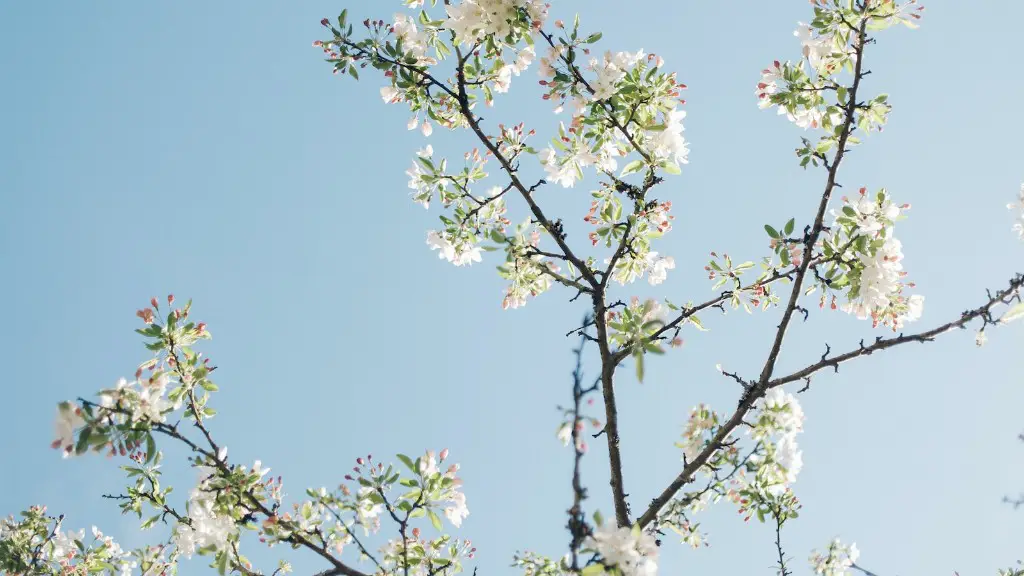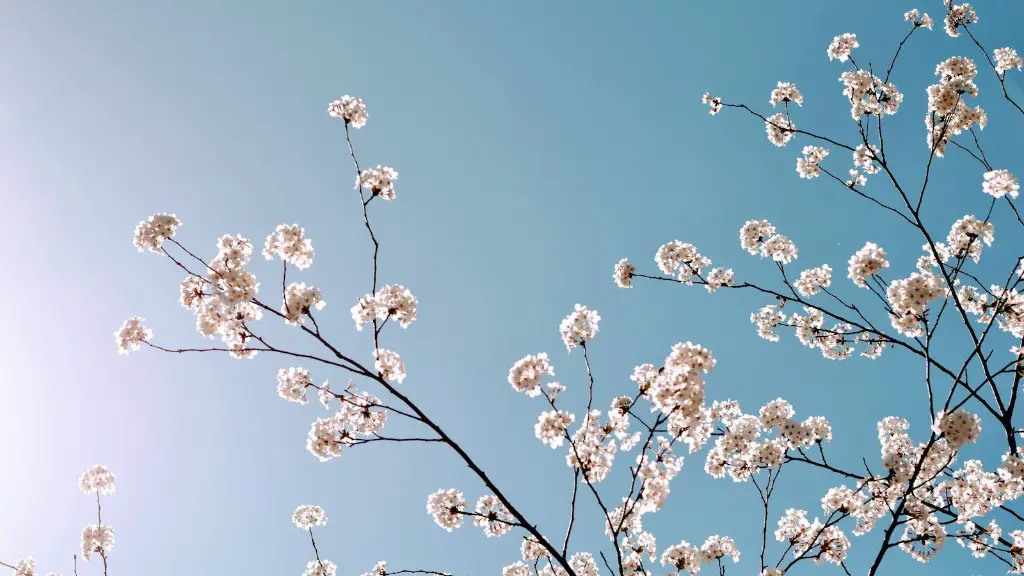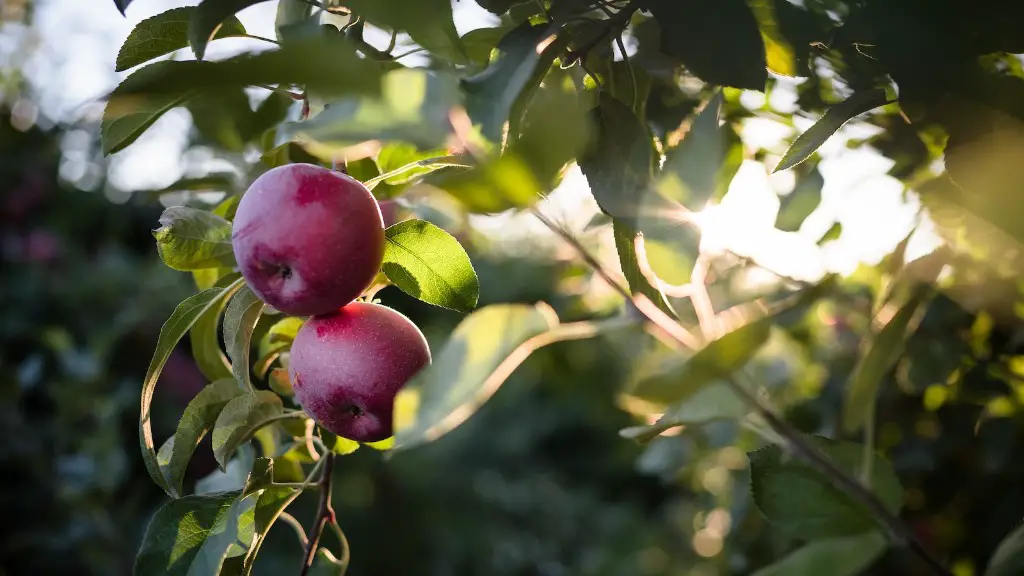One possible reason your palm tree is turning black could be because of a fungal infection called sooty mold. This problem is usually caused by insects that feed on the sap of the tree, such as aphids or whiteflies. The sap then drips down and coats the leaves and branches of the tree, which provides a perfect environment for the sooty mold to grow. The mold itself is not harmful to the tree, but it can cause the leaves to turn black and eventually drop off. If you suspect your palm tree has sooty mold, you should inspect it for signs of insect activity and try to control the population of the pests.
There are several potential reasons why your palm tree might be turning black. One possibility is that the tree is getting too much sun and the leaves are scorching. Another possibility is that the tree is not getting enough water and the leaves are beginning to dry out and turn brown. If the tree is in a pot, it might not be getting enough nutrients and the leaves are starting to turn black. If you’re not sure what is causing the problem, you should take your palm tree to a nursery or garden center for diagnosis.
What causes palm tree leaves to turn black?
A potassium deficiency can cause black spots of dead leaf tissue. Before the tissue dies and turns black, it will appear as yellow or orange translucent spots. As the deficiency continues, the leaf tips become affected, and may appear burned or frizzled.
The first symptom of infection in a palm tree is typically the withering and drooping of older fronds. Fronds may collapse and droop parallel to the trunk, and new growth is often stunted and pale green or yellow. In severe cases, the head of the infected palm may fall off or the entire trunk may collapse.
What does a dying palm tree look like
If you see any of the above signs in your palm tree, it is important to take action immediately in order to save the tree. The first step is to check the tree for any pests or diseases, as these can often be the cause of palm tree death. If you find any, you will need to treat them accordingly. If there are no pests or diseases present, you will need to check the tree’s watering and fertilization schedule to make sure it is getting the proper care. If you see that the tree is not getting enough water or nutrients, you will need to adjust its care accordingly. With proper care and attention, you should be able to save your palm tree from dying.
Palm bud rot is a serious problem for palm trees. The first sign of this disease is typically wilting and color change in the spear leaf. These symptoms then spread to the next youngest leaves. However, if your palm canopy is above eye level, you may not see these changes. In this case, the first symptoms you’ll notice are a lack of new crown growth. If you notice any of these symptoms in your palm tree, it’s important to contact a professional tree care company immediately. Left untreated, palm bud rot can kill a palm tree.
What does an overwatered palm look like?
Overwatering your palm tree can lead to a number of problems, including drooping leaves, black spots on leaves and stems, mold on the surface of the soil, and yellowing leaves. If you see any of these signs, it’s important to cut back on watering and allow the tree to dry out a bit.
If you notice that your palm tree is starting to look unwell, the first step is to check to see if it’s getting adequate water. Ideally, the root ball should be soaked. If it seems okay, trim off all the dead fronds. If you have the ability, we suggest you treat the palm with a fungicidal drench.
How do you tell if a tree is diseased or dying?
If you notice that a tree is shedding sticks constantly or that the bark is falling off, it may be a sign that the tree is dying. You may also see signs of rot or fungus, open wounds, or no leaves. Additionally, termites or other pests may be present, or the roots may be damaged. If you notice any of these signs, it’s important to have the tree checked by a professional to determine whether it can be saved.
Stem bleeding is a common symptom of Thielaviopsis trunk rot observed on Cocos nucifera (coconut). This stem bleeding is a reddish-brown or brown or black stain that runs down the trunk from the point of infection (Figure 6). The bleeding is the result of the pathogen blockage of the xylem vessels, which transport water and nutrients up the trunk to the leaves. Thielaviopsis trunk rot is a serious disease that can kill young coconuts and weaken older trees.
What is the black on my palm tree trunk
Sooty mold is a type of fungal disease that can affect palm trees. The disease is characterized by black, moldy patches on the fronds or trunk of the palm tree. While sooty mold does not typically harm the palm tree, it can be a symptom of a larger problem. Homeowners should be aware of this disease and watch for any signs of it on their palm trees.
A dying palm tree can be a sad sight, but there are some things you can do to try and save it. First, make sure you are watering it the right amount. Too much or too little water can both be detrimental. Second, use high-quality fertilizer and keep it 2 ft away from the roots. Overfertilizing can be just as bad as not fertilizing at all. Third, use high-quality soil when planting or replanting your palm tree. Cheap soil can contain harmful chemicals that will damage the roots. Finally, don’t prune during hurricane season. High winds can break off branches and damage the tree.
Should I cut off dying palm leaves?
There are two main objectives for pruning palm trees – to reduce risk and to enhance aesthetics. To reduce risk, lower fronds that are dead or dying should be removed, as well as sprouts or stems that could develop into competing trunks. To enhance aesthetics, consideration should be given to removing chlorotic or dead fronds, as well as to maintaining a single trunk.
A new palm should be watered everyday on its first week, switched to every other day the following week, and then settle for 3 times a week on the third week. For more established palms, watering should be done only 2-3 times per week, and this is only in the absence of rainfall.
Can a tree recover from rot
If your tree is starting to show signs of rot, it’s important to take action quickly. Rot can spread quickly and kill a tree if left unchecked. However, if the rot hasn’t spread far and the tree is otherwise healthy, it may be able to heal itself.
Fertilization and proper watering (as part of a complete Plant Health Care program) can help improve the tree’s health and extend its life, even if it has signs of decay. So if you’re worried about your tree, be sure to consult with a professional to see if these measures may be helpful.
If you have a palm tree with leaf spot fungi, it’s important to take action to treat the condition and prevent it from spreading. Prune away the most infected leaves, and apply fungicides to the remaining leaves. You should also fertilize your palm tree to boost its vigor and help it fight off the fungi more effectively.
Why is my outdoor palm dying?
Possible causes for a palm tree not getting enough water or key nutrients are:
-Weevils, spider mites, or aphids infestation
-Fungal infection like Ganoderma root rot
It’s important to water your palm tree regularly, especially during the spring and summer months. However, you should reduce watering during the autumn and winter months. If the weather is hot and dry, you should mist the foliage several times a day to keep it cool and help deter pests.
Final Words
There are several possible reasons why a palm tree might turn black. One possibility is that the tree is suffering from a fungal infection called sooty mold. This fungus grows on the honeydew that is produced by pests such as aphids and scale insects. The tree can also turn black if it is not getting enough sunlight. Another possibility is that the tree is being attacked by a type of beetle called the palm borer. This beetle drills holes in the trunk of the tree, which can cause the tree to turn black.
The most likely reason your palm tree is turning black is due to a lack of magnesium. Magnesium helps support photosynthesis and chlorophyll production, both of which are essential for a healthy palm tree. A lack of magnesium will cause the leaves of your palm tree to turn black and eventually die.




